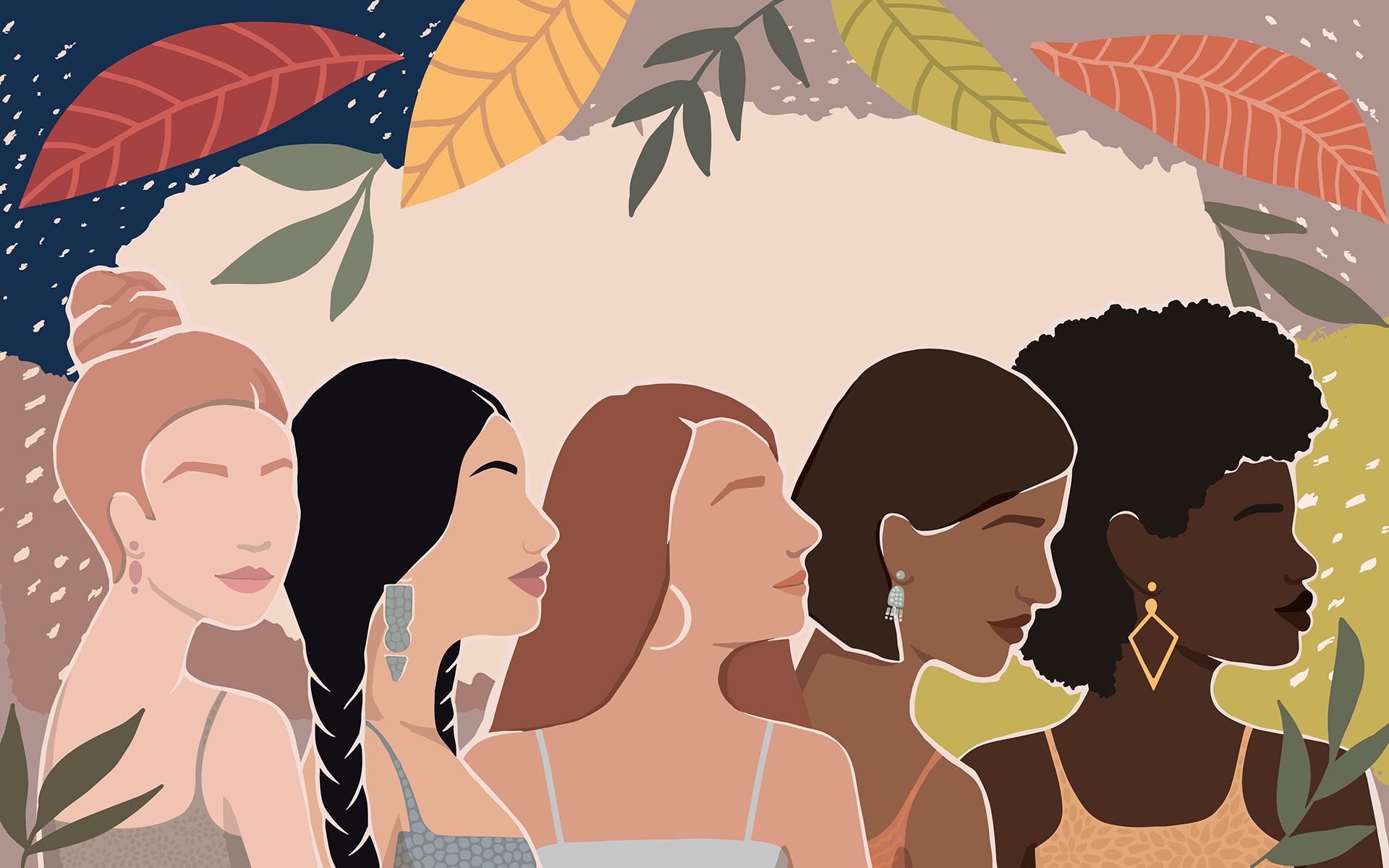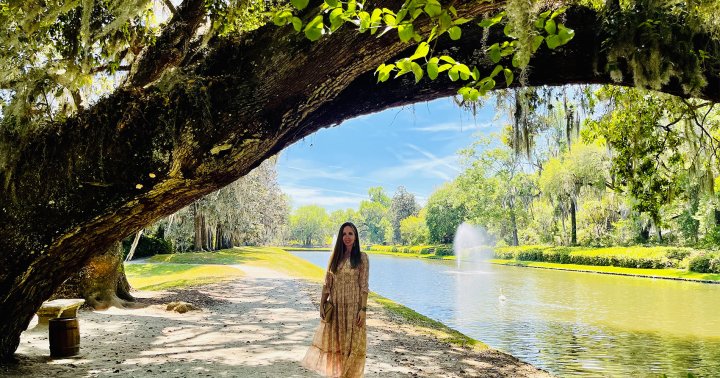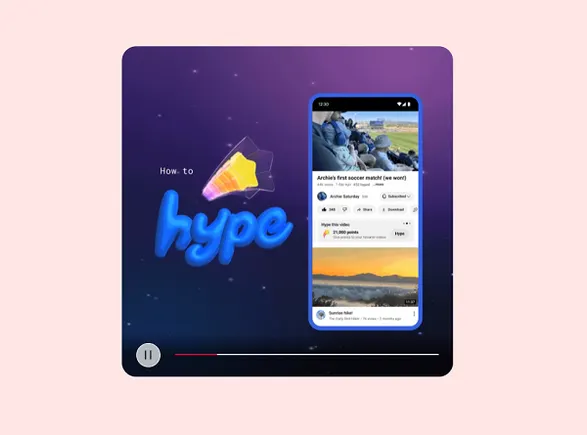10 Powerful Women of the Mindfulness Movement: 2022
In our fourth annual focus on women leaders of the mindfulness movement, ten women share what they’ve learned about living a life of meaning and purpose and how cultivating happiness fits into the equation. The post 10 Powerful Women...

In every walk of life, women are broadening and deepening the definition of “power.” So-called “soft skills” like compassion, empathy, kindness, and forgiveness, once seen as feminine—read, weak—are being rewritten as essential ingredients for thriving, success, and even happiness. In our fourth annual Powerful Women of the Mindfulness Movement feature, we asked 10 women, chosen by their peers, to share with us what power looks like in their lives, and how happiness arises for them. Here, they share what they’ve learned about purpose, community, connection, and how mindfulness can change the world.
Care for Everyone
Meena Srinivasan
Mentor, Teacher, Ancestor
“What kind of ancestor am I willing to be?” Meena Srinivasan credits her teacher Larry Ward with inviting her to contemplate this essential question. For Srinivasan, there’s immediate personal resonance—she has a young son. But she knows her role as an ancestor is broader than her family.
Srinivasan is the executive director of Transformative Educational Leadership, cofounded by Linda Lantieri and Daniel Rechtschaffen. Like Lantieri, Srinivasan is an educator guided by the principles of Social Emotional Learning, and like Lantieri, she believes in the power of mindfulness to change lives—especially when leaders engage in deep practice with Larry Ward’s question in mind.
“If you’re not practicing mindfulness with that question at the core, you might de-stress a little, but you’re not going to actually effect change.”
“When school leaders are supported on the path of mindfulness, they can begin healing the separation, leading for belonging, letting our beloved community extend to the Earth.”
In the Oakland schools she worked in, Srinivasan saw firsthand the limits of social and emotional learning. “The implementation of social emotional learning was ultimately ineffective, if you didn’t have leaders who embodied these skills and competencies.” And Srinivasan knew that a casual mindfulness practice was not enough to help leaders keep their seat when times got tough. “Is it baked in enough into who you are that you can draw upon it when you’re at the school board meeting and there is a really angry parent there?”
Srinivasan believes that when school leaders are supported on the path of mindfulness, they can begin “healing the separation, leading for belonging, letting our beloved community extend to the Earth.”
And that’s heart work, for Srinivasan. “For me, happiness is so deeply connected with purpose and meaning. The pandemic has invited us all to look deep into what really matters. And for me, it’s definitely community where everyone is cared for.” – SD
Allow Yourself to Heal
Aden Van Noppen
Founder and Executive Director, Mobius
Aden Van Noppen teetered between two worlds in her late twenties. She would go on a meditation retreat, return to the outside world only to get caught up in work, then back on retreat to feel connected to her practice again. In the midst of it all, she had a major health crisis—a cerebral hemorrhage—and in the moment of finding out she had a massive brain bleed, her practice rose to the surface. “I was in a place of feeling grounded, of feeling a lot of acceptance, and in particular feeling a lot of gratitude for having been alive at all,” she says. “And it was clear to me that I didn’t want to live on that seesaw anymore.”
So, she made herself a promise. Once recovered from the hemorrhage and from brain surgery, she began to integrate her practice and her wellness into her work. She made the shift from senior advisor to the US Chief Technology Officer to resident fellow at Harvard Divinity School, where she worked at the intersection of technology, ethics, spirituality, and justice to explore how wisdom traditions could help influence the direction of modern tech. Her guiding question: How do we bridge across differences in the context of the digital age?
“When I feel like day-to-day there is so much that I need to get done, what’s actually called for is releasing that energy and just being.”
As Van Noppen experimented with bridging the gap between worlds, she connected with others in the mindfulness space who were thinking about how technology could increase compassion in the world. Eventually, the community of teachers helped form what is now known as Mobius—a collective committed to creating a world where technology fosters liberation and thriving for all.
Between her work and personal life, Van Noppen says her practice has changed over the years. “My practice has evolved to a practice that’s really grounded in what serves most in the moment. And there’s a fluidity to it,” Van Noppen says. “In my life, when I feel like day-to-day there is so much that I need to get done, what’s actually called for is releasing that energy and just being.” – KR
Encourage Freedom
Michelle C. Chatman
Anthropologist, Associate Professor, Singer
When Michelle Chatman was growing up in DC, she savored the time she spent hand-writing long letters to her maternal grandmother, Evelyn, who lived in New Jersey. Chatman loved the stories her mother told her and her siblings, capturing their imaginations, and in the summers, Chatman spent many days at the Smithsonian, the museum where her father worked. She was enraptured by the artifacts and histories housed there.
“That love of reading, writing, stories, and imagination really helped cultivate a mindful, still way of being,” she says.
Those moments of full-body presence she experienced in her youth are part of what she brings to the students and faculty of the University of the District of Columbia (UDC) in Washington where she teaches. She sometimes begins classes with music—John Coltrane is a favorite—inviting students to breathe deeply “and to think about the stories of our lives and our experiences,” she says. “Where have we been able to inhale and exhale with a sense of freedom and pleasure?”
“If we can bring our full selves to those stories, they can be really healing, powerful, and transformative.”
She says music and storytelling are culturally relevant ways to connect Black and brown students with mindfulness. “For me, it was listening to stories with my mom or hearing my grandmother’s voice in the letters she wrote to me. Our young people can connect to narratives in hip-hop music because they’re all just different forms of truthful storytelling. I think if we can bring our full selves to those stories, they can be really healing, powerful, and transformative for us.”
Chatman is currently working on launching The Mindfulness and Contemplative Action Lab at UDC, an experiential classroom and research lab for healing-centered mindfulness and contemplative approaches. She hopes the mindfulness community can become more aware of its shortcomings when it comes to true inclusion, so that everyone has more opportunities to breathe more deeply and freely.
“I have a sense of joy and satisfaction with the things I have been able to accomplish. I have a sense of wonder about the things that are yet to unfold. And a really deep sense of appreciation of the new people I meet and the new ways that my work is having an impact in the world.” – AWC
Nurture the Next Generation
Dr. Sará King
Neuroscientist, Medical Anthropologist, Creative Director at Mobius
On a bright afternoon in January, Dr. Sará King pauses and looks out her hotel room window. After a few moments, she says, “For me, happiness is not isolated.”
Instead, she says, it is most often found in connection—to her husband and teenage daughter, her community, and her environment. “I think that’s part of what has been so challenging about this pandemic, this restricted capacity to get out and connect with the world around us.”
At the center of her work is the question of how we can connect to ourselves, our circumstances, and one another in ways that begin to heal what she calls the global “epidemic of stress and trauma.” One of her priorities is finding vehicles for mindfulness education and exploration outside of retreat centers and yoga studios to help make awareness-building and healing skills more accessible.
“Even murals and street art are these beautiful repositories of beauty and awe that can really engage us in our capacity to think outside of the concept of a very limited, separate, and alone self,” she says. In April, she launched the first awareness-based education program and study at the Museum of Modern Art in New York, available for free online.
“I have a lot of hope in my heart right now about happiness and how the felt state of happiness can be enhanced and distributed equally across society.”
She says tech can play a role in helping us find genuine connection that’s grounded in compassion, gratitude, loving-kindness, joy, and awe.
“I have a lot of hope in my heart right now about happiness and how the felt state of happiness can be enhanced and distributed equally across society,” she says.
A guiding principle for King is listening to her 14-year-old daughter and her daughter’s generation, who she believes has a real understanding of what is needed and urgent right now. To those with young people in their lives, she says, “Treat them like they’re a big deal, feel like they’re super-important because they are. I think that the more authentic care and compassion and loving-kindness we show to the younger generations, that is a very clear and easy path forward to creating the conditions for planetary health.” – AWC
Align With Your Purpose
Linda Lantieri
Teacher, Leader, Emerging Elder
At an international peace conference at The Hague in 1991, Bishop Desmond Tutu leaned forward and looked down the row of his fellow panelists till his eyes rested on Linda Lantieri. “See that woman at the end?” Lantieri remembers him saying as he looked at her. “She’s dangerous. If she continues to do this work, kids are going to grow up and none of them will want to put a gun in their hand, let alone press the switch that would cause a nuclear bomb.”
For Lantieri, it was confirmation that she was on the right path, and that her work would be recognized, not just by luminaries like Tutu, but by the people whose lives she was lucky enough to touch every day. Lantieri had been working as an educator for about 20 years by that point—she began teaching when she was barely 20 years old in East Harlem, New York, and began exploring meditation and mindfulness a few years later, eventually bringing together her mindfulness practice and her work as an educator. She became director at an alternative middle school where “meditation was very much a part of things. We had a meditation room where teachers came at 7:30 in the morning and meditated before school.”
Lantieri, who had always been an activist for peace, developed a curriculum with Educators for Social Responsibility. A pilot project called Resolving Conflict Creatively was rolled out to 500 schools across the country, and was the precursor to the work that led Lantieri to help grow the field that would become Social Emotional Learning framework, as cofounder of the Collaborative for Academic, Social, and Emotional Learning.
With a grant from the Centers for Disease Control, Lantieri and her colleagues measured the effect their Social Emotional Learning method was having on the 5,000 children who participated across the country.
“It’s nurturing not only one’s mental, emotional, physical, but what I call spiritual dimension of who we are that gives us purpose.”
“We found pro-social behavior and a decrease of anti-social behavior,” Lantieri says. “But also, developmentally both boys and girls move toward more negative attribution—which can lead to anti-social behavior including violence, and then it kind of evens itself off a bit, but for some kids it continues in that trajectory developmentally. And this study showed that we interrupted that trajectory.”
It was that outcome that led Bishop Tutu to call Lantieri a dangerous woman at that peace conference. Lantieri is now turning her attention toward educators, knowing that she can reach more students by teaching their teachers. She’s a cofounder of Transformative Education Leadership, a year-long training process that brings together a “community of middle- to upper-level educational leaders who go through a deep process of growth at the inner level so they can do the outer action and service in the world that they wish to do.”
And for Lantieri, that’s the root of happiness: “It’s nurturing not only one’s mental, emotional, physical, but what I call spiritual dimension of who we are that gives us purpose.” – SD
Be Happy for Each Other
Renda Dionne Madrigal
Clinical Psychologist, UCLA Certified Mindfulness Teacher, Turtle Mountain Chippewa
Renda Dionne Madrigal first encountered mindfulness in graduate school. Over ensuing years, and with a decolonial lens, she incorporated mindfulness into her therapeutic work with Indigenous communities in Southern California. She also invented ways to share it with her two daughters. “My family was always sort of the guinea pigs,” she laughs. “They’ve been part of all the practices that we do.” This led to writing The Mindful Family Guidebook, published last spring.
“We’re here on this Earth for a relatively short time, but we have a connection to everybody that’s come before us, everybody we’ve loved.”
Her husband, Luke Madrigal, a traditional Culture Bearer of the Cahuilla tribe, would also practice: “He really gravitated to the ‘hard’ practices, like loving-kindness.” It was mindfulness and story, she says, that helped her family through Luke’s unexpected death in early 2020. Dionne Madrigal finds strength in the worldview that “we’re here on this Earth for a relatively short time, but we have a connection to everybody that’s come before us, everybody we’ve loved.” There are ancient stories from the Chippewa and other Indigenous nations, teaching us how to keep our hearts open through grief. And she finds inspiration in strong women peacemakers. While taking Stanford’s Applied Compassion Training program, she says, “I started researching the old stories, and I kept finding these really powerful women who had gone through great tragedy, but that didn’t stop them from continuing on their path.”
As a clinical psychologist employing embodied mindfulness-based therapies, one thing she focuses on is helping clients cultivate happiness and joy. “When we go through hard things, it’s almost like we leave ourselves,” she says. Noticing sensations in the body “helps us build tolerance for having emotion, which is part of our human experience.” Likewise, by staying present for the joyful moments, we strengthen neural connections to positive memories and emotions, whether in solitude or with family and community. “The happiness within relationships is so important,” she says. “We need to be cultivating happiness in a group, being happy for other people and hoping for them to develop their talents. Because when more people develop their talents, it benefits the whole world.” – AT
Embrace Change
Dr. Wendy Hasenkamp
Neuroscientist, Podcast Host, Introvert
While studying neuroscience during her PhD program, Dr. Wendy Hasenkamp found herself focusing on everything that could go wrong with the human mind. So when she was introduced to the practice of mindfulness meditation and began to notice the changes taking place in her daily life, she began to wonder what it would be like to study what could go right with the human mind instead.
“I was immediately taken by this new experience of my own mind—a new perspective of being able to kind of step out and observe. And pretty quickly I noticed some changes in my life, that as a neuroscientist, I was like, What is going on in my brain? Something is clearly changing and it’s just, I’m just sitting here watching my breath,” she says.
Change and transformation are recurring themes in Dr. Hasenkamp’s life. As a former gymnast, she is no stranger to taking big leaps, so shifting her field of research during a time when “mindfulness” and “meditation” were spoken in hushed tones within the scientific community was a change she happily embraced and even deemed necessary.
“Transformation is necessary to make the world a better place. There’s suffering and there’s pain in the world and I think part of our purpose, or perhaps our biggest purpose, is to try to reduce that.”
“Transformation is necessary to make the world a better place. There’s suffering and there’s pain in the world and I think part of our purpose, or perhaps our biggest purpose, is to try to reduce that,” she says.
Dr. Hasenkamp has gone through many more cycles of reinvention since those days. She’s now the science director at the Mind & Life Institute and the host of the Mind & Life podcast, a position she says surprises her, considering that she’s a huge introvert. However, her goals have remained the same: communicating science to the public in a way that’s accessible without being overly simplified.
“I continue to think that the mind is one of the most fascinating concepts that we can look at because it’s the foundation of all of our experience,” she says. “Understanding it from all the angles that we can is the key to learning our behaviors, the effects that we have on this planet and on each other, and moving toward a healthier society.” – OL
Celebrate Intergenerational Wisdom
Rose Felix Cratsley
Teacher, Leader, Change-Agent
Rose Felix Cratsley considers her first mindfulness teachers to be her parents. Growing up in a family that had practiced mindfulness for generations, Cratsley feels extremely fortunate to have been given what she calls “the gift of mindfulness” early in life.
“My lens into mindfulness is firstly through my parents, who are my teachers, and also learning the value of both informal and formal practice. Learning the importance of creating spaces for contemplation throughout our lives, not just seated formally, doing a guided practice or a shared practice, but one that also focuses on the value of the collective and the value of shared intergenerational practice.”
So in her graduate class at Harvard University when given the prompt, “If we wanted to bring positive psychology practices and mindfulness into the world in some way, in what way would that be?” it felt natural to her that her reply would be creating Ivy Child International.
“I think mindfulness is an essential and fundamental human right. We come into the world open and curious, but oftentimes self-judgment, criticism, fear, and anxiety come about.”
“I think mindfulness is an essential and fundamental human right. We come into the world open and curious, but oftentimes self-judgment, criticism, fear, and anxiety come about later,” she says. So Ivy Child International, the nonprofit she created, addresses the often neglected needs of marginalized communities with mindfulness education for children, adults, and families in these communities. With programs covering mindful movement, mindful eating and nutrition, and mindfulness for parents and caregivers, Ivy Child has positively impacted almost 300,000 children, families, and adults.
“So a big part of our work is how do we harness, celebrate, and strengthen the mindfulness that everyone is so innately born into this world with?” Cratsley says. “And how do we do so in a manner that really broadens the impact and access, particularly for communities who would not be able to access them as a fundamental right, as well as a tool to navigate life and all of life’s seasons?” While she continues to provide others with the tools to access their innate mindfulness skills, she draws strength from these tools as well.
“I stand before you as an Asian woman of color who, while I’ve been given these amazing gifts by way of practice and heritage and values, I was also conditioned, as a young Asian woman, to cover my feelings,” she says. “And what I think Ivy Child and this work has allowed me to do is both to create the space, to elevate my voice, and amplify voices for others who have also been historically marginalized.” – OL
Create Space for Joy
Ericka Phillips
Teacher, Organizer, Literary Agent
Ericka Phillips’ father taught her to meditate when she was 12 or 13. “From the very beginning, meditation was inside of a liberatory framework for me,” she explains. Initially, it was a sense of personal liberation: “I realized I could cultivate an experiential sense of freedom, through my practice.” Now, as a meditation guide, community organizer, and mindfulness thought leader, she’s also experienced how mindfulness can support communal liberation. She describes working with a group organizing around gentrification and displacement in inner-city neighborhoods: “At one point, I looked around the room and I realized that many of us are descended from people and cultures who have been displaced violently for so many generations. I realized this experience that we were having right then was so much deeper for all of us.” Mindfulness offered “a way of being together, acknowledging all that’s in the room, and giving space for our collective healing.”
“I’ve been able to see how joy in and of itself is also an act of resistance, and an act of healing.”
While the pandemic meant shifting her meditation-teaching work online, Phillips has also begun working as a literary agent with spiritual teachers who are women of color, Black women in particular. “When I stepped into this practice as an adult and was seeking out books and experiences from people whose lives I could relate to—there weren’t many,” she says. She’s uncovered joy and inspiration in having “conversations with teachers who I find incredibly inspiring, and supporting them on their path to publishing and making their voices…more accessible.” Still, how Phillips relates to joy has changed in the last few years, during which she’s experienced immense personal losses. Navigating grief is a significant part of her practice. “One of the most profound lessons I’ve learned from this grieving is the importance of cultivating joy, seeking joy,” says Phillips, “and listening for that and seeing that takes for me a tremendous amount of stillness and patience.”
With familiar joys, like traveling and gatherings, off the table, she had to get creative: “I really learned that joy itself is the practice. Sometimes it feels like the grief, the things that are difficult or painful, somehow weigh more. But I think, through accessing that stillness and patience, I’ve been able to see how joy in and of itself is also an act of resistance, and an act of healing.” – AT
Share Your Practice
Ruimin Zheng
Researcher, Doctor, Teacher
Mindfulness is a part of Ruimin Zheng’s daily life. She practices on silent retreat at least once a year, while teaching Mindfulness-Based Childbirth and Parenting (MBCP) courses, and often in quiet moments while traveling for work in her role as Deputy Director of Women’s Health Care at the National Center for Women and Children’s Health in China. This wasn’t always the case. When her work in obstetrics and gynecology crossed paths with mindfulness, Zheng saw herself as a researcher tasked with learning about the practice. She never thought she would be a mindfulness practitioner— or a teacher. “Mindfulness is like both salt and water,” Zheng says through an interpreter. “It’s like water because when you first encounter mindfulness, you don’t taste a lot of it.” The deeper you go, the more you can appreciate its different flavors.
“With mindfulness, these mothers and mothers-to-be learn how to take better care of themselves. And they can find their own happiness and joyfulness.”
Before establishing her own mindfulness practice, she worked in a clinical setting as an OB-GYN where she felt limited in her work with women. She thought she could do more by moving into preventive care, she says. When she was first introduced to mindfulness as a health intervention, she thought it would be valuable to women’s well-being, because it was replicable and could be shared widely at a low cost in the public sector.
Her interest led her to the founder of MBCP, Nancy Bardacke. Zheng spent time studying with Bardacke in the US and brought everything she learned back with her to help expectant and birthing families through MBCP in hospitals and health centers throughout China. “There is a clarity because of her own personal experiences with practice,” Bardacke says. “There’s authenticity and also there’s the visionary aspect. There’s tenacity. There’s heart.”
“For a lot of women, not only in China but worldwide, I think that the fear of childbirth is still quite a big issue,” Zheng says. But with mindfulness, “these mothers and mothers-to-be learn how to take better care of themselves. And they can find their own happiness and joyfulness.”—KR

 UsenB
UsenB 






























